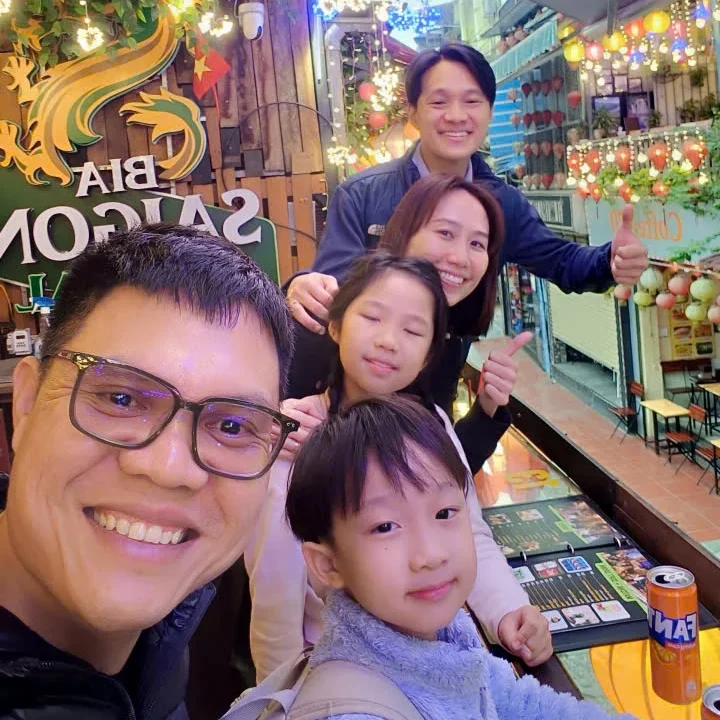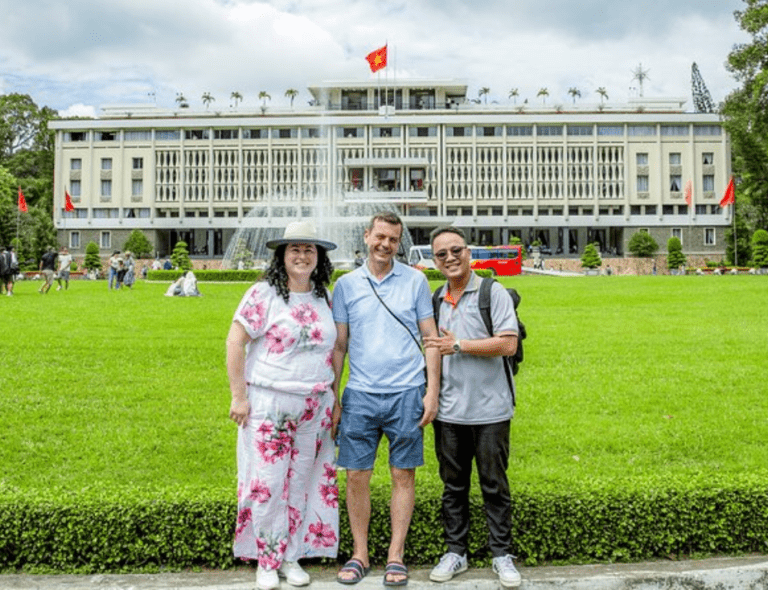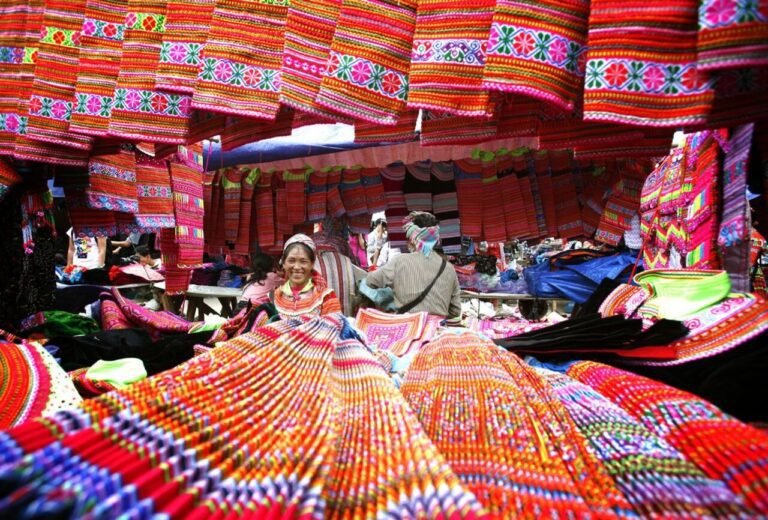Vietnamese Table Manners: Traditions, Etiquette & Sharing
In Vietnam, mealtime is not simply about satisfying hunger—it’s a rich expression of culture, family bonding, and deep-rooted respect. Vietnamese table manners are passed down through generations, shaping how people connect over food. To understand Vietnamese life, you must experience their meals, where sharing, humility, and community are always at the center.
How Traditional Vietnamese Family Meals Are Arranged
A typical Vietnamese meal is served on a round tray or table where everyone sits together and shares dishes. This communal aspect reflects harmony, balance, and family unity. Vietnamese family meal traditions highlight values like respect, equality, and the joy of togetherness.
The Vietnamese table is set with a variety of Vietnamese dishes—rice, vegetables, meat, fish, and soup. Each dish is placed in the middle so that everyone can reach and share.
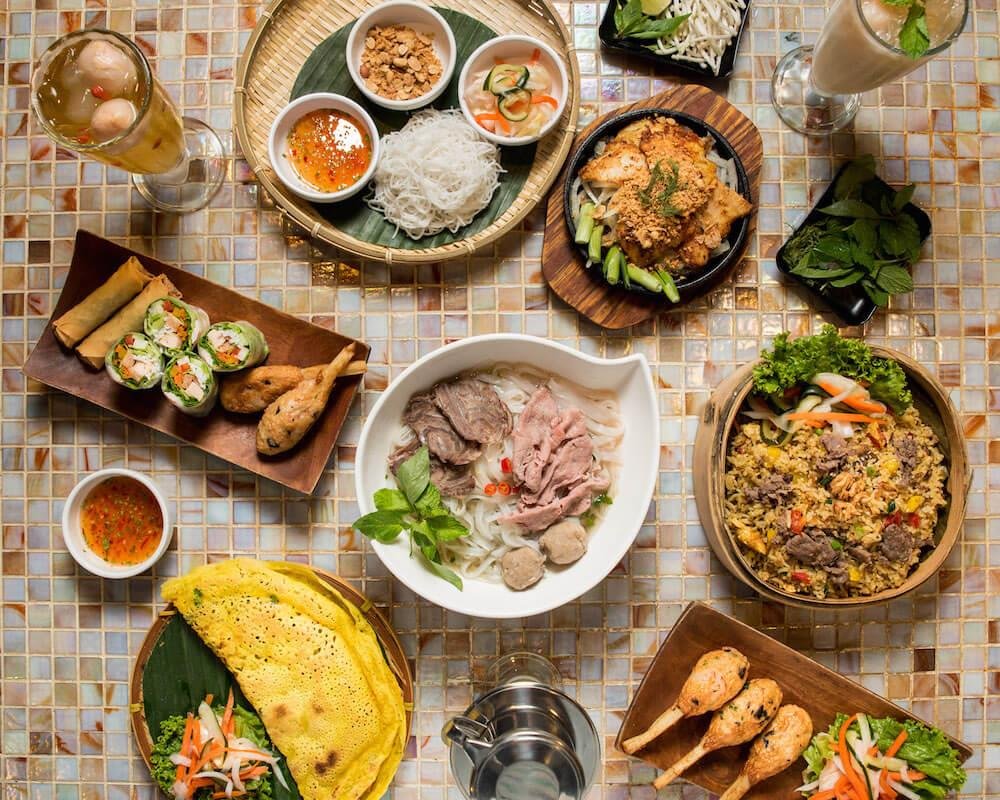
- Rice is always the centerpiece of any meal.
- Vegetables and proteins are served in smaller portions to encourage balance.
- Soup is usually served at the end to cleanse the palate.
This arrangement reflects the essence of sharing food in Vietnam, where meals are built for mutual enjoyment, not individual plates.
👉 Read more: 14-Day Explore Vietnam Local Food
Seating Order and Invitation Etiquette
Before anyone begins eating, it’s customary to wait until the eldest or the head of the Vietnamese family invites everyone to eat. This moment isn’t rushed—it’s a sign of respect and hierarchy, essential to Vietnamese table manners.
- The old people or guests are seated in the most honored spots, often facing the entrance.
- Children and younger people wait to eat until elders have taken the first bite.
- A polite phrase such as “Mời cả nhà ăn cơm” (Let’s all eat) is said before starting.
This demonstrates how Vietnamese family meal traditions are rooted in courtesy and gratitude.
Explore tour: 13-Day Vietnam Adventure Motorbike Street Food Sightseeing
Chopsticks, Bowls, and Common Mistakes
Using chopsticks properly is a core part of Vietnamese table manners. They’re not just utensils—they represent discipline, grace, and social norms.
Proper Usage of Chopsticks
- Always keep chopsticks aligned and hold them neatly.
- Don’t point or wave chopsticks in the air.
- Avoid sticking them upright in a bowl of rice—it resembles offerings to the dead.
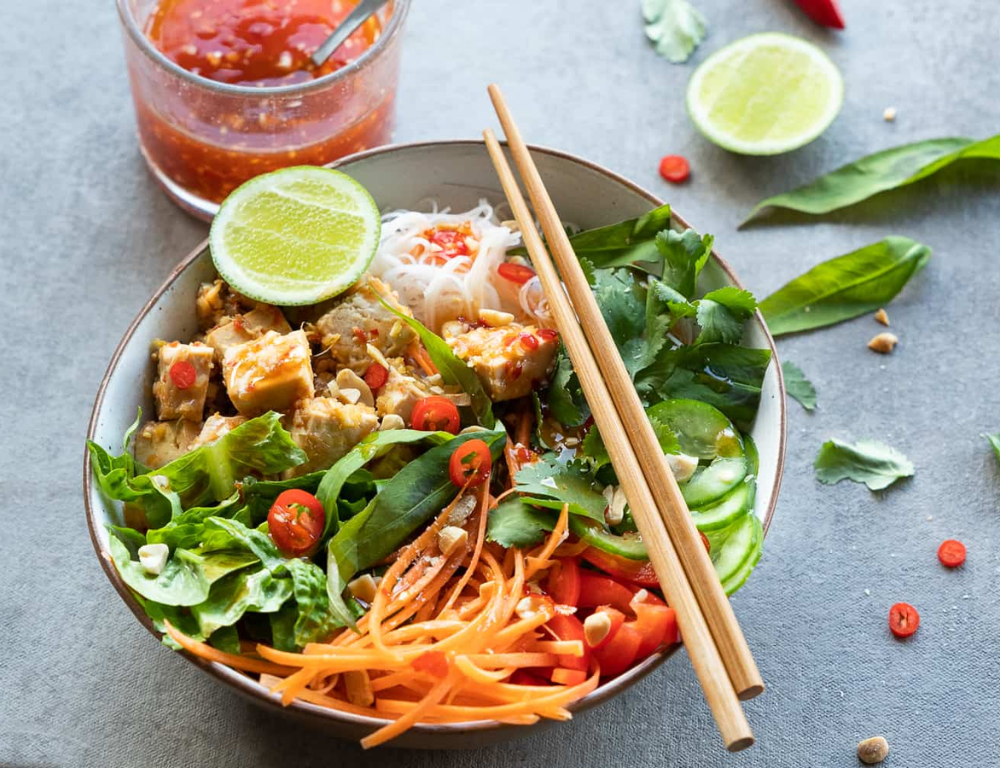

Handling Bowls and Serving Etiquette
- Hold your bowl close to your mouth when eating rice or soup.
- Never shovel food or make loud eating noises.
- Use the serving end of chopsticks or a shared spoon to serve food to others.
These actions not only show good manners but also highlight the spirit of sharing food in Vietnam with thoughtfulness and hygiene.
🔥 Want to learn more about Hoi An Street Food? Click here to read our in-depth guide.
Do’s and Don’ts at the Vietnamese Table
Eating in Vietnam isn’t just about taste—it’s about behavior and awareness. A few simple habits can show deep respect or cause accidental offense.
What You Should Do
- Invite others to eat before you start.
- Pass dishes or serve others before serving yourself.
- Express appreciation, especially to elders or the cook.
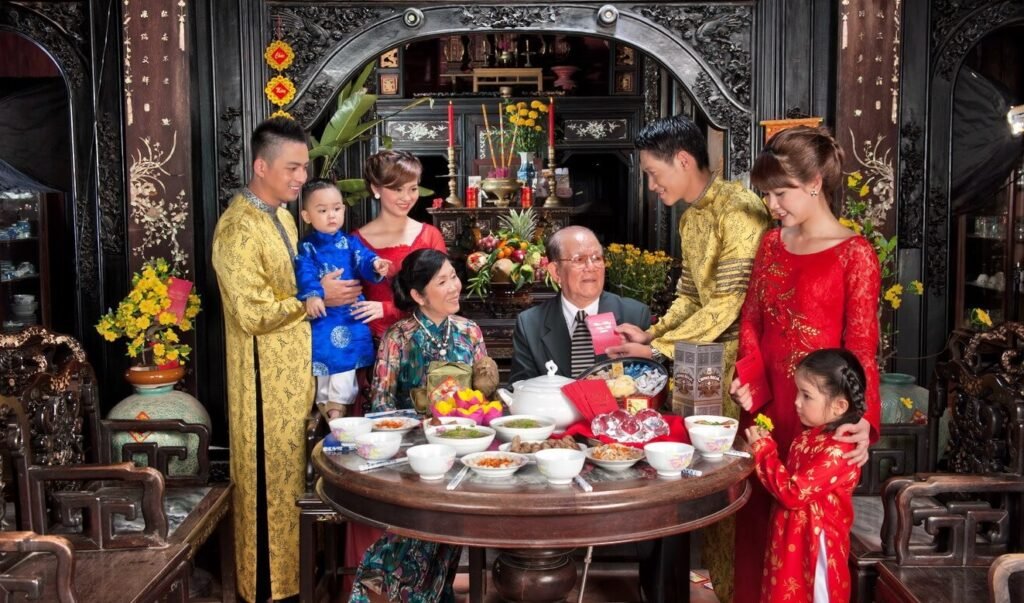

What You Shouldn’t Do
- Don’t talk with your mouth full or chew loudly.
- Avoid criticizing food, even jokingly—it’s seen as disrespectful.
- Refrain from using your personal chopsticks for communal dishes.
Respect is key to Vietnamese table manners, and observing these do’s and don’ts will help you blend in seamlessly.
Explore: Unveiling Vietnamese Culture: Traditions, Etiquette & Festivals for Travelers
Mealtime as a Space for Sharing and Connection
Vietnamese meals are rarely silent. While formal in behavior, meals are also vibrant with conversation, laughter, and personal stories. Vietnamese family meal traditions treat dinner time as an opportunity to check in on each other, share updates, and feel supported.
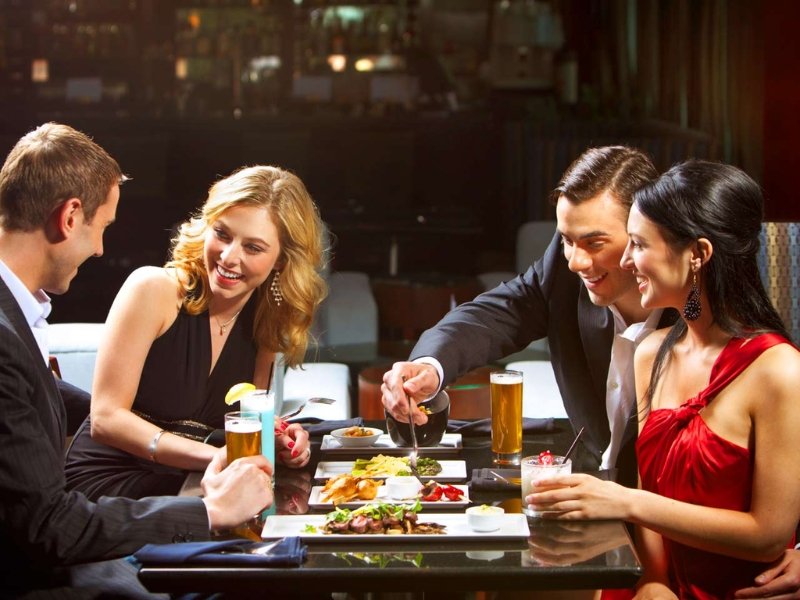

Topics often range from:
- How the day went at school or work
- Funny incidents or childhood memories
- Plans for the weekend or holidays
It’s a time when everyone, regardless of age, gets a voice at the table. And that’s a beautiful part of sharing food in Vietnam—it’s about sharing lives, too.
🔥 Want to learn more about Hanoi street food? Click here to read our in-depth guide.
Regional Differences in Dining Customs
While the core values of Vietnamese table manners are consistent, certain habits vary by region. These differences reflect the country’s diversity, both in flavors and in etiquette.
- Meals tend to be more reserved and formal.
- Flavors are subtle, and balance is emphasized in both taste and behavior.
- Etiquette leans toward delicacy and intricacy.
- People in this region often serve others more frequently as a sign of affection.
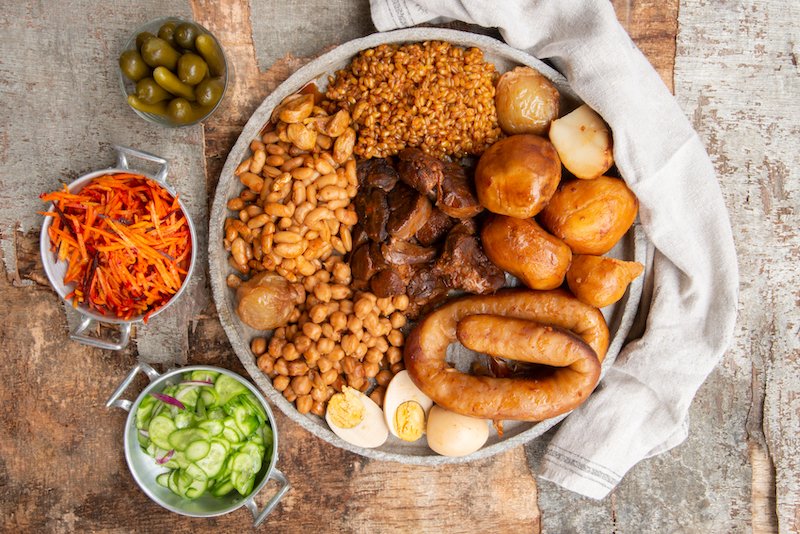

- More relaxed and casual in tone.
- Sharing meals is often louder and more expressive, reflecting the tropical, vibrant lifestyle.
No matter where you go, sharing food in Vietnam remains a powerful cultural anchor, yet the tone and flow may shift slightly from north to south.
Common Phrases Used During Meals
Language is an essential part of etiquette. Knowing a few Vietnamese phrases can make a world of difference when joining a local family meal.
- Mời anh/chị ăn cơm – Please have some rice (a polite meal invitation)
- Cảm ơn, món này ngon quá! – Thank you, this dish is delicious!
- Ăn đi, đừng ngại – Eat up, don’t be shy
Using these expressions adds warmth and shows you care about local customs.
🔥 Improve your language skills with our top-rated Vietnamese Language Schools Hanoi.
Tips for Vietnamese Table Manners with Locals
As a visitor, you don’t have to be perfect—Vietnamese hosts are very forgiving and welcoming. But showing effort and curiosity will always be appreciated.
- Watch what others do before jumping in.
- Don’t be afraid to ask if you’re unsure—it’s better than making assumptions.
- Offer to help clear the table afterward.
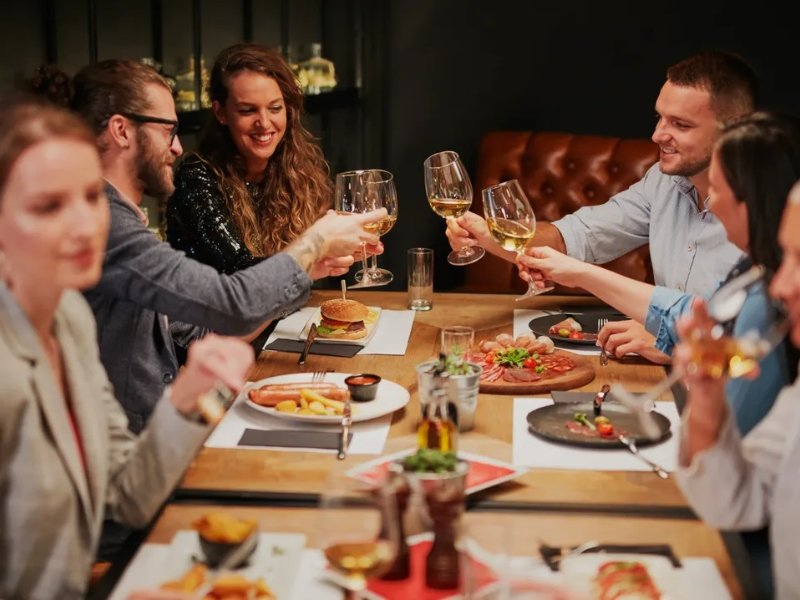

👉 Explore the full guide to Vietnam culinary experiences and turn your trip into a delicious adventure.
These small gestures make you not just a guest, but part of the meal—and that’s exactly what Vietnamese table manners are all about: inclusion, care, and respect.
Respect isn’t just for formal occasions—it’s built into daily life, and meals are one of the most consistent rituals to express it. By following Vietnamese table manners, you’re not just eating—you’re participating in a centuries-old tradition of mindfulness, humility, and connection.
👉 Read more: 14-Day Explore Vietnam Local Food
FAQs About Vietnamese Table Manners
1. Why is it rude to stick chopsticks upright in rice?
Because it resembles offerings made to the deceased at funerals, which is considered bad luck.
2. Can I start eating before others at a Vietnamese table?
No. It’s polite to wait until the host or elder invites everyone to eat.
3. Do Vietnamese people use forks and spoons?
Yes, for certain dishes like soup or dessert, but chopsticks are the main utensils.
4. What if I don’t like a dish—can I refuse it?
It’s best to try a small portion and express appreciation. Openly refusing or criticizing is considered disrespectful.
5. How do I show respect when sharing food in Vietnam?
Serve others before yourself, use the shared utensils, and thank the Vietnamese home cook or host sincerely.
Conclusion: Eating with Heart and Harmony
Dining in Vietnam is about more than what’s on your plate. It’s about who you’re with, how you treat them, and how you show appreciation. Whether you’re learning Vietnamese table manners, exploring Vietnamese family meal traditions, or simply embracing the joy of sharing food in Vietnam, every gesture carries meaning.
So next time you’re invited to a Vietnamese meal, bring your appetite—and your respect. The food will warm your body, but the experience will warm your heart.
Our all-inclusive trips cover every detail, from accommodations and transportation to unforgettable experiences, depending on your interests (Our Customized Private Tour for each customer to Vietnam 🇻🇳). Ready to embark on your next adventure?
Ask a question
Leave a Comment (0)
No questions yet. Be the first to ask a question!

